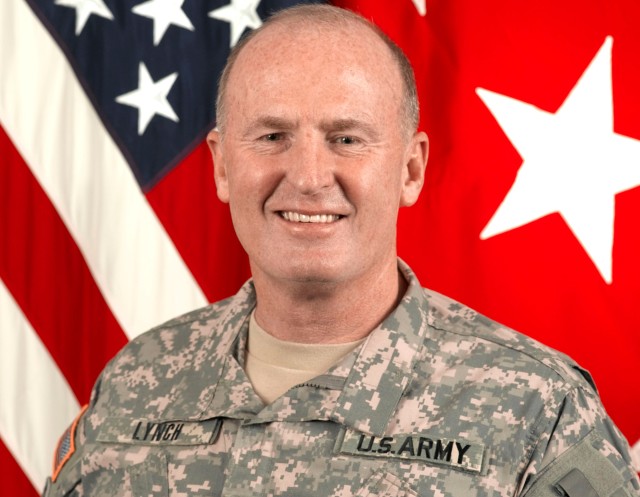ARLINGTON, Va. -- Earlier this month, I discussed the progress we made resolving 17 of 40 quality-of-life issues at the AFAP General Officer Steering Committee held in February. During the same week, AFAP delegates representing Army garrisons and commands worldwide met in our nation's capital to review and prioritize 88 quality-of-life issues that had been identified throughout the year at midlevel AFAP conferences across the Army.
As the Assistant Chief of Staff for Installation Management and the overseer of the AFAP process, I had the privilege to speak to these delegates and impress upon them the great responsibility of identifying the most critical issues for the Army to work. Delegates were comprised of Soldiers, Spouses, DA Civilians, Wounded Warriors and Survivors. Each brought their own ideas, perspectives and experiences to share in the decision making process.
The task before them was not an easy one, yet they met the challenge with an overwhelming sense of enthusiasm and energy. They reviewed, they discussed and they challenged each other on the issues. At the conclusion of the conference, 16 new quality of life issues were identified and reported out to senior Army leadership.
The top five issues identified to senior Army leaders are:
*ID cards for surviving children with an active duty sponsor that annotate both active duty and Survivor status
*Wounded Warrior caregiver training
*Medically retired servicemembers' eligibility for concurrent receipt of disability pay
*Military Child Development Program fee cap
*Medical retention processing time restrictions for Reserve Component Soldiers.
Currently, there is no way to annotate both dependent Survivor status and active duty status on an identification card. This issue affects dependants of dual military parents when one military parent dies or children of a surviving parent who remarry a servicemember. This may cause undue emotional stress when Survivors must justify their Survivor status in order to qualify for Survivor specific services.
The delegates recommend ID cards annotate both dependant survivor status and active duty status to ensure Survivors quickly receive all Survivor services available.
Delegates also recommend providing caregivers of Wounded Warriors formal standardized training on self-care, stress reduction, burnout and prevention of abuse/neglect. Without this training, caregivers may suffer from caregiver fatigue which may ultimately lead to neglect of a Wounded Warrior or damage to the Wounded Warrior and caregivers' relationship. The implementation of formal standardized, face-to-face training for designated caregivers of Wounded Warriors is critical to those who help heal our nation's heroes.
The elimination of the 20-year time in service requirement for medically retired servicemembers to be eligible for concurrent receipt of disability pay (CRDP) was also identified as an issue to be worked this year. The CRDP eliminates the offset between retirement pay and VA disability compensation. Removal of the 20-year restriction would restore the full retirement pay and VA entitlements to the medically retired servicemembers with less than 20 years of active service.
Some military families using Military Child Development Programs pay greater than 25 percent of their total monthly Family income for childcare. The recommendation is to cap program fees at 25 percent of the military Family's total family income.
Lastly, Medical Retention Processing for Reserve Component Soldiers is limited to six months from their date of release from active duty. However, medical conditions resulting from active duty service are not always visible within the first six months of release from active duty. Extending the medical retention processing to five years would allow Reserve Component Soldiers to receive proper medical treatment.
The remaining 11 issues identified by the AFAP delegates are Survivor, Medical, Family Support and Civilian personnel issues. I encourage you to learn more about these new issues by visiting the Army OneSource website at https://www.myarmyonesource.com/familyprogramsandservices/.
In addition, you can follow the progress on all issues that are currently being worked by selecting "Active Issue Search" at the bottom of the page and then search by issue number or keyword. The website also allows you to submit a new issue directly to your garrison or unit AFAP process, and provides AFAP brochures, articles and videos to download. You can also download the "HQDA AFAP Issue Search" application for free on your iPad®, iPhone® and iPod Touch®.
As I have said many times before, our Army will not break because of its Soldiers but it will break because of the stress placed upon our Soldiers and their Families. Never before have we asked so much of our Army Families. Because of this, the Army will continue to fully fund and staff Army Family programs and keep our promise of providing Soldiers and Families a quality of life that is commensurate with their service.
In order to ensure the promise is always kept, we must continue to identify inefficient, redundant or obsolete programs and services so we can redirect those resources to where we truly need them. I challenge each of you to help us in this endeavor. In the near future, I will communicate to you where and how you can help. Moving forward, the AFAP process will not only be the identification of quality-of-life issues, but also the identification of potential offsets to resource those quality-of-life issues.
Support and Defend,
D6
Related Links:
Lt. Gen. Rick Lynch on Twitter


Social Sharing